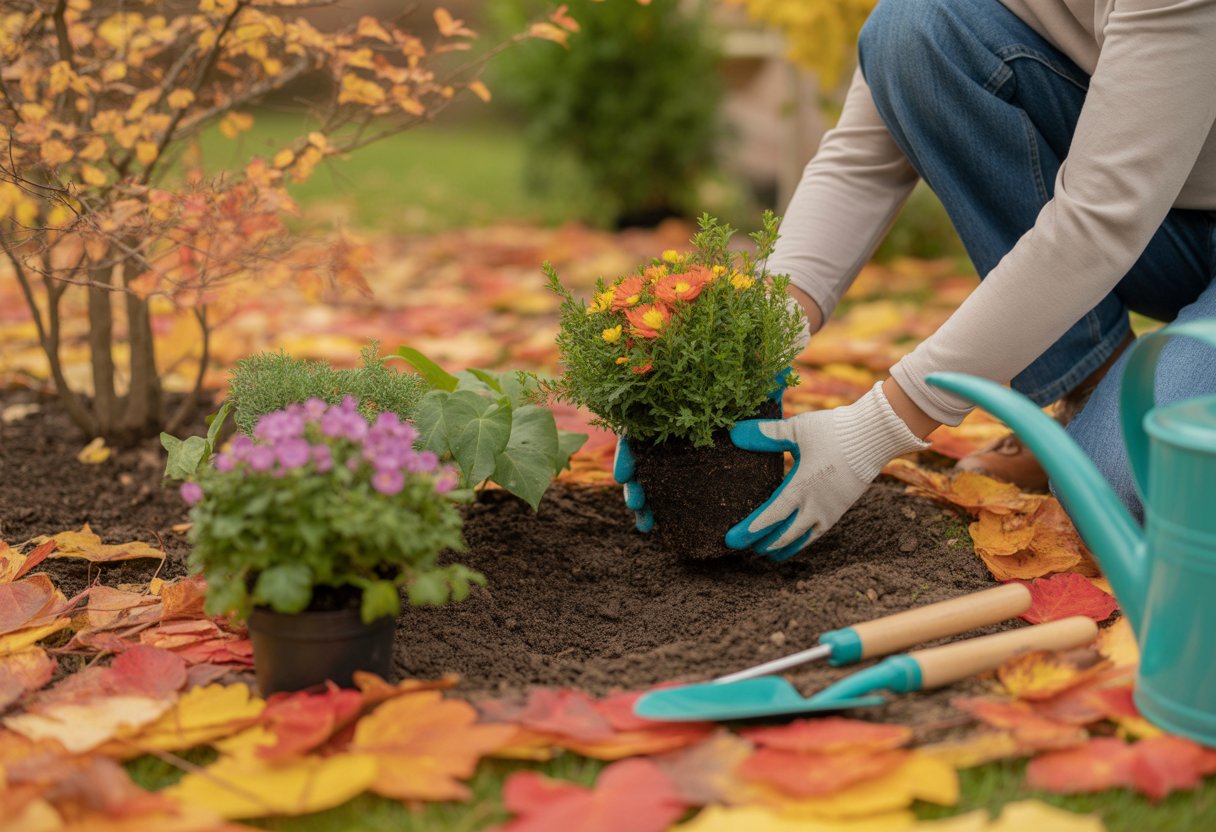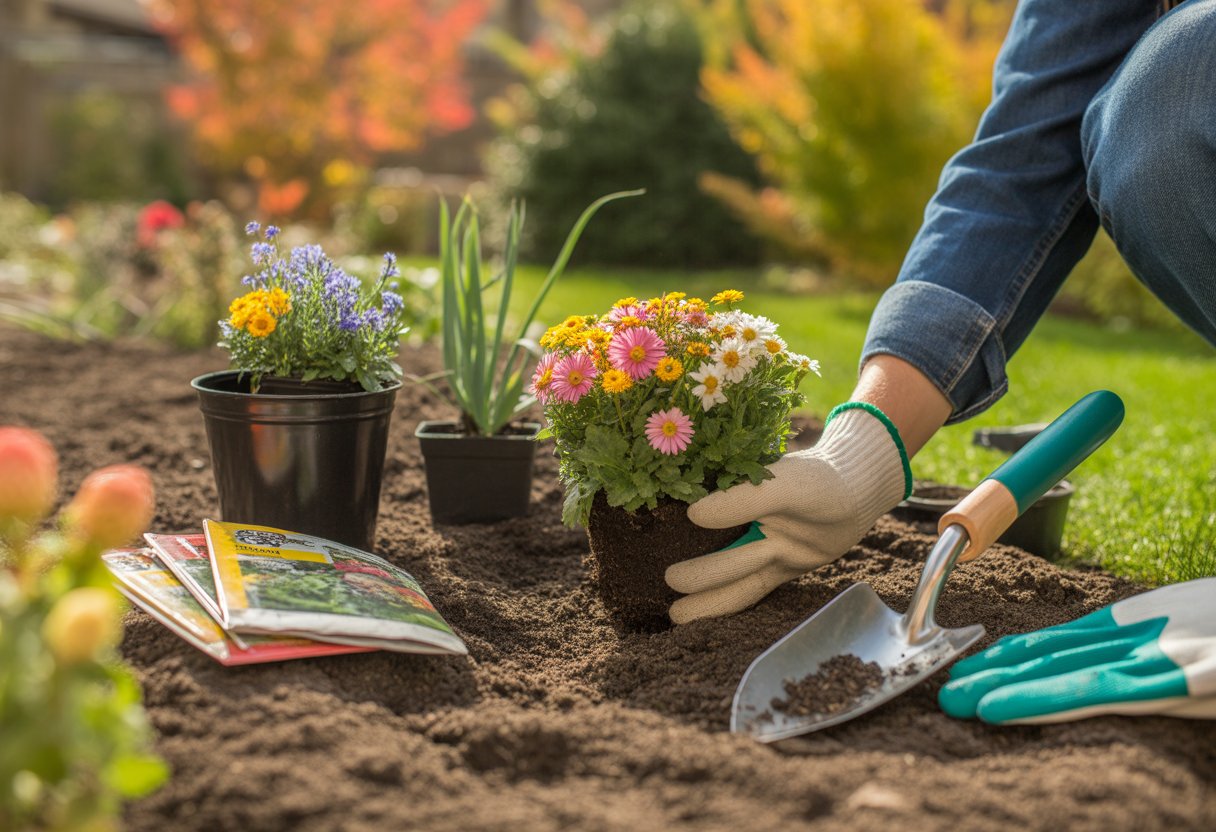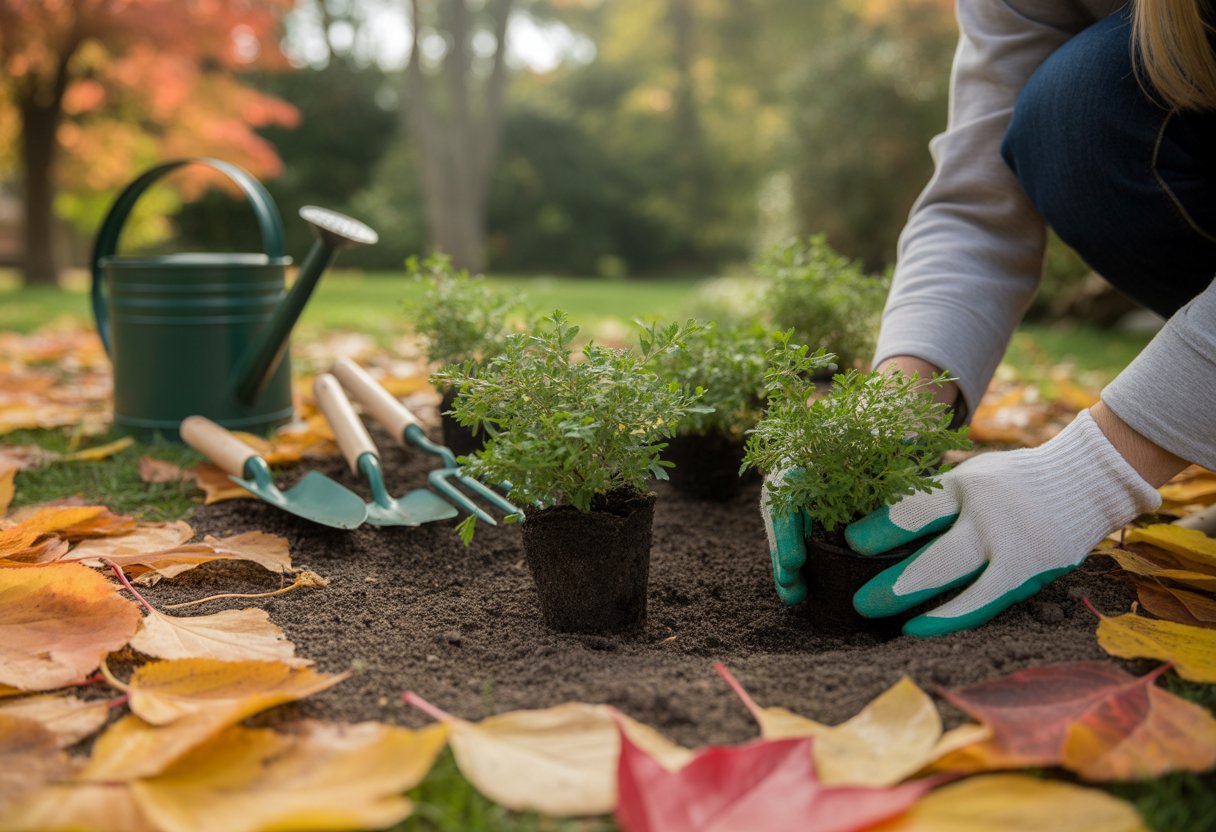Fall Planting Guide for Perennials: Essential Tips for Healthy Growth
Planting perennials in the fall can really set up your garden for success next year. Fall planting lets perennials develop roots in cooler weather, giving them a real head start before spring growth kicks in.
This timing helps plants avoid stress and boosts their survival odds.

When you plant in autumn, you get the bonus of milder soil temperatures and, usually, more reliable rain. Young perennials love this—deeper roots, less fuss.
Picking the right time and spot in fall makes a difference if you want these plants to come back strong every year.
Knowing which perennials handle fall planting well, and how to care for them, can really change the game. With some prep, a fall garden can be a low-maintenance and productive addition to your yard.
Essential Planning for Fall Planting

A little planning goes a long way if you want perennial plants to thrive after fall planting. Picking perennials suited for autumn and sizing up your garden’s environment helps with bloom time and overall design.
Selecting the Best Perennials for Autumn
Go for perennials with sturdy root systems that can settle in before winter. Coneflowers, sedums, and ornamental grasses don’t mind the cold and will prep themselves for spring.
Mixing up bloom times keeps your garden interesting. Asters and chrysanthemums, for example, show off late in autumn, adding color when other plants are fading out.
If you’re dealing with heavy feeders or plants that don’t like wet feet, don’t plant them too late. Stick to hardy perennials that match your area’s frost dates and soil quirks.
Understanding Your Garden’s Conditions
Get your soil ready—this is huge for fall gardening. Adding organic matter boosts drainage and makes nutrients more available.
Think about sunlight and soil pH when you’re designing. Some perennials, like black-eyed Susans, want full sun, while others, like bleeding hearts, would rather chill in the shade.
Check soil moisture and texture before picking a spot. Loamy, well-drained soils help roots thrive, but if you’re stuck with heavy clay, you might need to amend it for better airflow.
How to Plant Perennials in the Fall
Planting perennials in fall? Start by prepping the soil for root growth. Divide any crowded plants and keep up with watering after they’re in the ground.
Cooler temps and moist soil make it easier for roots to settle in before winter hits.
Soil Preparation and Fertilization
Get the soil loose—about 12 inches deep is good—so roots can spread out. Mixing in organic matter like compost or aged manure ups the soil’s fertility and helps it hold moisture.
Add a balanced organic fertilizer before planting to feed those roots. Skip high-nitrogen fertilizers, though; they push leafy growth and can actually weaken roots before winter.
Test your soil pH and try to keep it between 6.0 and 7.0 for most perennials.
After planting, gently firm the soil to get rid of air pockets, but don’t stomp it down. Mulch with shredded bark or straw to lock in moisture and keep the soil temperature steady as it gets colder.
Transplanting and Dividing Existing Plants
Take advantage of fall’s mild temps and higher soil moisture to move or divide perennials. Water your plants well the day before digging to make the process less stressful.
Use a sharp spade or knife to split up root clumps. Make sure each piece has at least three healthy shoots and a good chunk of roots.
Replant divisions at the same depth they grew before. Mulch helps protect roots and keeps moisture in.
Don’t plant too deep or too shallow—roots can rot or dry out. Keep an eye on new transplants for signs of shock.
Watering Techniques for New Perennials
Consistent watering is key right after planting. Those new roots need steady moisture to get established before winter.
A drip irrigation system or soaker hoses work best, sending water straight to the roots and cutting down on evaporation.
Water deeply about once or twice a week, making sure the soil stays moist (not swampy). Overhead watering isn’t great in cool weather—it can cause fungal problems.
As it gets colder and plants start to go dormant, back off on the watering. Check soil moisture often, especially if you’re not getting much rain.
Top Perennial Varieties and Companion Plants
Picking the right plant combos can really pull your garden together. Think year-round appeal—mix in spring bulbs, tough perennials, and some structural shrubs for continuous color and texture.
Colorful Bulbs and Flowers for Spring Interest
Spring bulbs like daffodils, tulips, crocuses, hyacinths, and alliums bring that early-season pop of color and pull in pollinators. Get them in the ground during fall so they can set roots and bloom strong in spring.
Plant bulbs in clusters for a more natural vibe, and pair them with groundcovers like creeping phlox to keep the show going longer. Bulbs do best in well-drained soil with plenty of sun.
Early bloomers fill in gaps and give your summer perennials a nice lead-in, making the garden feel lively from the start.
Popular Perennials to Plant in Fall
Some perennials just love a fall planting—asters, coreopsis, daisies, daylilies, chrysanthemums, peonies, and monarda all put down roots before winter, then burst out in spring.
Pollinators benefit too. Asters and monarda draw in bees and butterflies late in the season.
Good soil prep and spacing set these plants up for success. Mixing bloom times and flower types also makes your garden more interesting and diverse.
Trees, Shrubs, and Evergreens for Structure
Don’t forget about trees, shrubs, and evergreens—they add structure and keep things looking alive even in winter. Deciduous trees and shrubs bring seasonal changes, while evergreens give you steady greenery and shelter for critters.
Try ornamental trees with cool bark or flowers, like dogwoods. Shrubs like chrysanthemums add fall color, and big ornamental grasses bring texture and movement.
Planting these in fall helps them root in before winter, so they’re ready to take off in spring. They also help define your garden and anchor the whole design.
Aftercare and Maximizing Fall Planting Success

After you plant, focus on protecting roots from cold and keeping pests at bay. These steps support healthy growth for next season.
Mulching and Protecting Plants for Winter
Spread a 2-3 inch layer of organic mulch like shredded bark or straw. Mulch helps buffer soil temperature, keeps moisture in, and stops those annoying freeze-thaw cycles.
It also cuts down on weeds and creates a barrier against some pests. Just don’t pile mulch right against stems or crowns—rot isn’t fun.
If you’re worried about tender plants, try burlap screens or cloches for extra protection. Make sure drainage is good so water doesn’t pool under the mulch during wet fall spells.
Deadheading and Maintenance
When you remove spent flowers—yeah, deadheading—it helps the plant send energy back into its roots and crown. That way, perennials get a little stronger before they go dormant.
If you spot diseased or damaged leaves, snip them off. This helps keep pests and fungi from sticking around through winter.
Biennials? They do better if you clear out old leaves, giving new growth some breathing room.
Keep an eye out for those stubborn late-season weeds and yank them before they take hold. As plants settle into dormancy, back off on watering so the soil doesn’t get soggy, but don’t let the roots dry out either.

